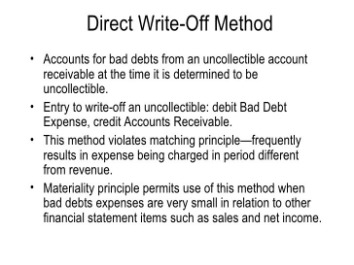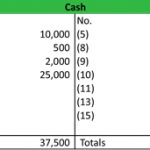Content

This is chosen predominantly in the economy where the interest rates are volatile, and it is expected to reduce in the future. A callable bond is a bond with an embedded option, an option that grants the issuer to redeem / call back the bond prior to its stated maturity, at a price known as call price. The factors that issuing bodies should consider before issuing callable bonds are timing and price. The former represents when the company should recall a particular bond, whereas the latter depicts the price that needs to be paid before redeeming them.
- Callable bonds are more risky for investors than non-callable bonds because an investor whose bond has been called is often faced with reinvesting the money at a lower, less attractive rate.
- To determine yield to worst, we first have to calculate yield to maturity, which anticipates how much returns a bond would earn the investor if they hold it till the maturity date.
- If you are having trouble seeing or completing this challenge, this page may help.
- The call date is the first date on which the issuer has the right to redeem the bond.
- The appropriate demand, given the risk and uncertainty they provide for the investor.
Bermuda callable bonds combine features of both European and American callable bonds. This redemption feature allows the issuer to manage their debt obligations based on changing interest rates and financial conditions. They sell the bonds to the new investors, who believe they have found a great deal. The buyer may pay a principle of $1,000 plus a commission—and then promptly discover that the bond is called.
Callable Bond Definition
However, the company issues the bonds with an embedded call option to redeem the bonds from investors after the first five years. Regular callable bonds have predetermined call dates accompanied with the premium price the issuer will pay on each call date. Can be called at any time when interest rates fall, leaving the investor with reinvestment risk, these bonds aren't necessarily bad for investors since, most of the time, the issuer won't call the bond.
Extraordinary Redemption allows the issuer to redeem the bonds when an unusual event hits the source revenue of the company. Special type of bonds that can be called early by the issuing company and retrieved from the bondholder before reaching the maturity date. A sinking fund bond is a coupon bond with a sinking fund provision. 'callablesinking' is a bond with a schedule of Facevalues and a sinking fund call provision with a single or stepped coupons. 'vanilla' is a standard callable or puttable bond with a scalar Face value and a single coupon or stepped coupons.
Are All Call Options the Same?
Yield to call is the rate of return an investor can expect to receive if the bond is called on a specific date. It takes into account the bond's current price, call price, coupon payments, and time to the call date. Buying any investment requires that you weigh the potential return against potential risk. For entry-level investors, callable bonds may be too complex to consider.
This may lead to declining bond yields over a term of the investment. For example, bond investors may get back Rs 107 rather than Rs 100 if the bond is called. This Rs 7 additional is given due to the investor’s risk if the company recalls bonds early in falling interest rates scenario. For example, on November 1, 2016, a company issued a 10% callable bond with a maturity of 5 years.
callable bond definition
Is the lowest yield an investor expects while investing in a callable bond. Generally, callable bonds are good for the issuer and bad for the bondholder. This is because when interest rates fall, the issuer chooses to call the bonds and refinance its debt at a lower rate leaving the investor to find a new place to invest. If interest rates are falling, the callable bonds issuing company can call the bond and repay the debt by exercising the call option and refinance the debt at a lower interest rate.

Both issuers and investors carry certain risks, and the investment plan has to be decided based on the needs and expectations. Callable bonds sometimes offer a better interest rate than similar noncallable bonds to help compensate investors for the call risk and the reinvestment risk that they face. Sometimes callable bonds will also set the call price above face value—say $1,002 versus $1,000. Callable bonds are a type of fixed income bonds with an embedded call option which gives issuers the right to redeem such bonds before their maturity dates. However, the issuing entities are not under any obligation to redeem them before the expiry.
Are callable bonds cheaper than non-callable bonds?
In the past decade, falling interest rates would have been a strong motivating factor, because after the financial crisis, the Federal Reserve cut benchmark rates to record lows and held them there for years. If you are looking to invest in a callable bond, you should do this after carefully analysing the bond document that explains all terms and conditions of recall. In the case callable bond definition of the rising interest rate scenario, investors sell the bond back to the issuer and lend somewhere else at a higher rate. Where the bondholder has a Right but not the obligation to demand the principal amount early. American OptionAn American option is a type of options contract that can be exercised at any time at the holder's will of the opportunity before the expiration date.
What is the meaning of callable and non callable bonds?
The issuer of a non-callable bond can't call the bond prior to its date of maturity. It is different from a callable bond, which is a bond where the company or entity that issues the bond owns the right to repay the face value of the bond at its pre-agreed value prior to when the bond matures.
A callable security is a security with an embedded call provision that allows the issuer to repurchase or redeem the security by a specified date. Timothy Li is a consultant, accountant, and finance manager with an MBA from USC and over 15 years of corporate finance experience. Timothy has helped provide CEOs and CFOs with deep-dive analytics, providing beautiful stories behind the numbers, graphs, and financial models. My Accounting Course is a world-class educational resource developed by experts to simplify accounting, finance, & investment analysis topics, so students and professionals can learn and propel their careers.
6 Interest Rate Risk: Duration
For a European option, there is only one ExerciseDates on the option expiry date. There is the exercise for instrument 1 at some node and no exercise for instrument 2. There is no exercise for instrument 1 and instrument 2 is exercised at some nodes. Senior Bonds means all Bonds issued as Senior Bonds in compliance with the provisions of the Indenture. Replacement Bonds means Bonds issued to the Beneficial Owners of the Bonds in accordance with Section 210 hereof. Refunded Bonds means the Series 2011A Bonds maturing in the years 2021 to 2026, inclusive, in the aggregate principal amount of $4,130,000.
Expected price of the embedded option at time 0, returned as a NINST-by-1 matrix. Derivatives pricing options, specified as the comma-separated pair consisting of 'Options' and a structure that is created with derivset. Settlement date for the bond option, specified as a NINST-by-1vector using a datetime array, string array, or date character vectors.
What is callable vs maturity?
Key Takeaways
Yield to maturity is the total return that will be paid out from the time of a bond's purchase to its expiration date. Yield to call is the price that will be paid if the issuer of a callable bond opts to pay it off early. Callable bonds generally offer a slightly higher yield to maturity.